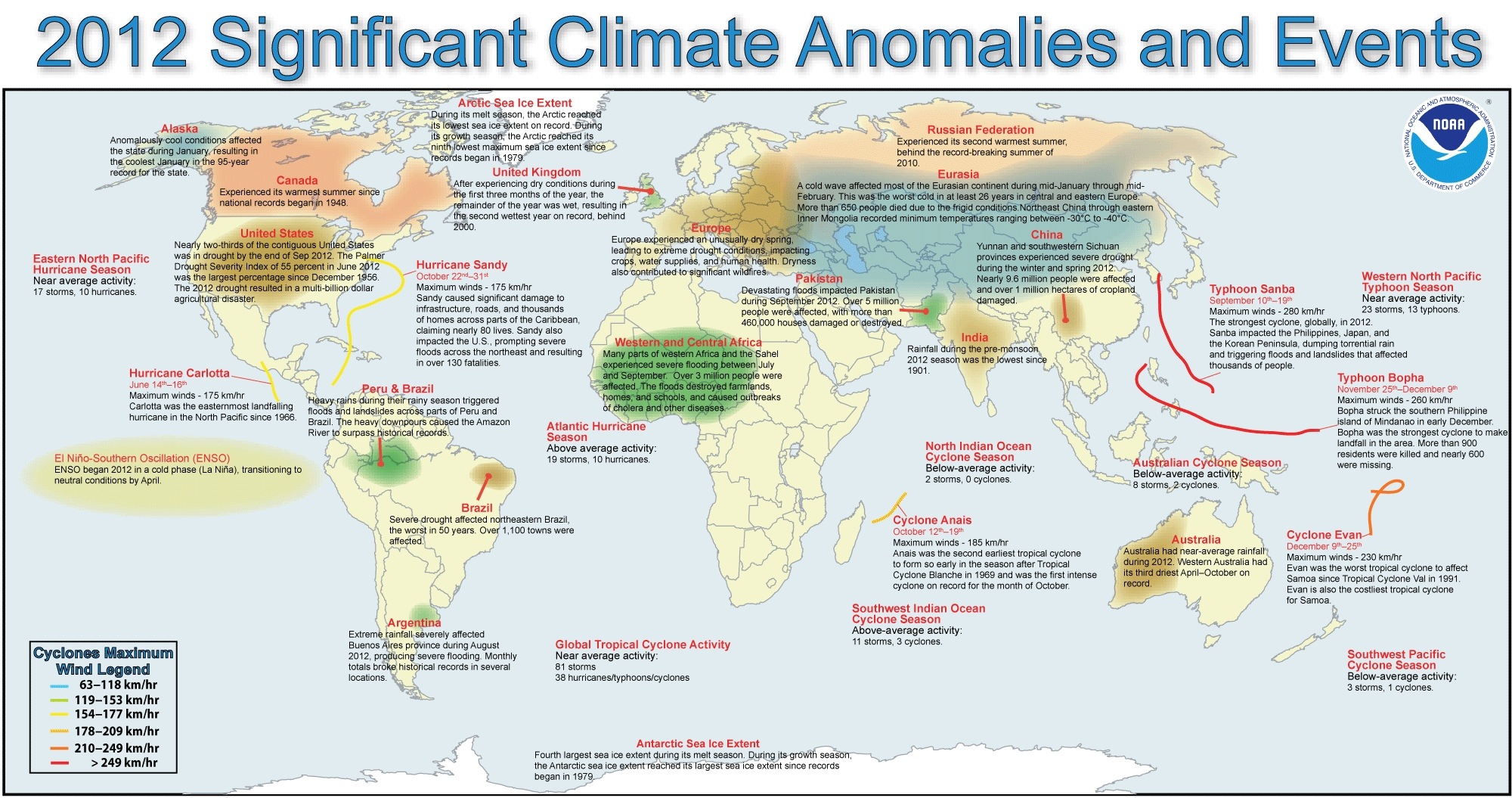The year 2012 was the most significant worldwide registry of severe and anomalous climate events on record. We can now see from direct observation that we are living in a destabilized climate. Drought, floods, cyclonic storms, and record low Arctic sea ice levels, all indicate the destabilization of major climate bands, and worse: they also helped to dislocate atmospheric energy flows that maintain relative climate stability over time.
In the United States, the hybrid hurricane-subarctic cyclone Sandy—which devastated the New York-New Jersey metropolitan area, impacting 21 states almost simultaneously, forcing hundreds of thousands from their homes and leading to shortages of gas, water and food—was arguably not the most significant climate anomaly.
The Great Plains drought spread across two-thirds of the contiguous 48 states, leading to an agricultural disaster. This was possibly less costly in dollar terms than the devastation of Superstorm Sandy, but directly impacted the human food supply, reducing production from the world’s most important grain exporting region, and impacting cost of living across the world.
Pakistan saw yet more record flooding, with over 5 million people affected, many forced to migrate, and more than 400,000 homes damaged or destroyed. Glacial melt in the Himalayas and the Hindu Kush is accelerating at a pace far worse than previously predicted, so fresh water vital to the survival of a third of the world’s population is being lost to damaging floods and premature runoff into the ocean.
In the Pacific Ocean, Typhoon Bopha saw winds in excess of 280 kilometers per hour (almost 60% stronger than Sandy), along with floods and devastation across the Philippines. Three major typhoons struck Southeast Asia, each of them with winds stronger than Sandy, forcing millions from their homes and impacting both agricultural and industrial production.
The North American drought coincided with Canada’s hottest year on record, and a record firestorm season across the American west. Millions of acres burned uncontrolled, while compounded drought—worsened by climate shifts and the further loss of moisture forced by drought itself—left more fuel for the fires to burn.
The dislocation of historically reliable precipitation channels meant that severe drought not only covered two-thirds of the contiguous United States, but also Europe, India, China, Australia and 1,100 towns across northeastern Brazil. The direct impact on food supply was significant, as the US, Brazil, India and the EU are all grain exporting leaders.
The destabilization of the global food supply was in part visible in the news that Brazil would replace the United States as the world leader in corn exports, due to the extreme severity of the 2012 US drought. While such shifts can support demand, at reasonable cost, for a time, such major shifts are not sustainable.
